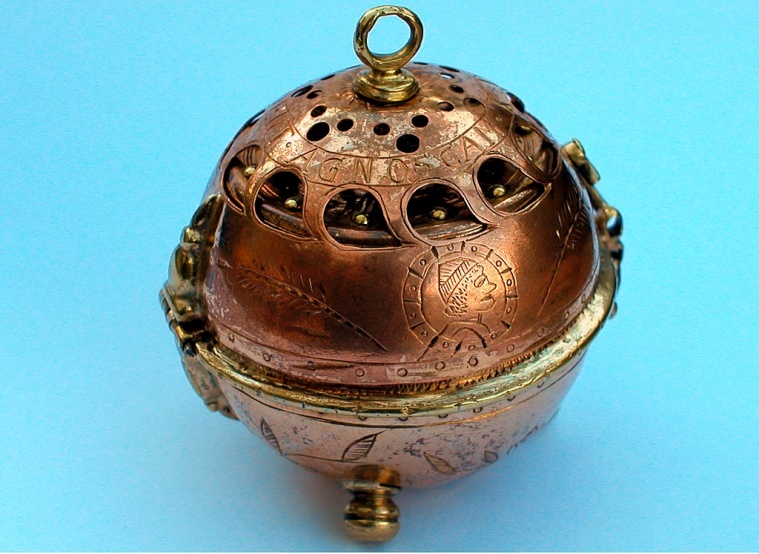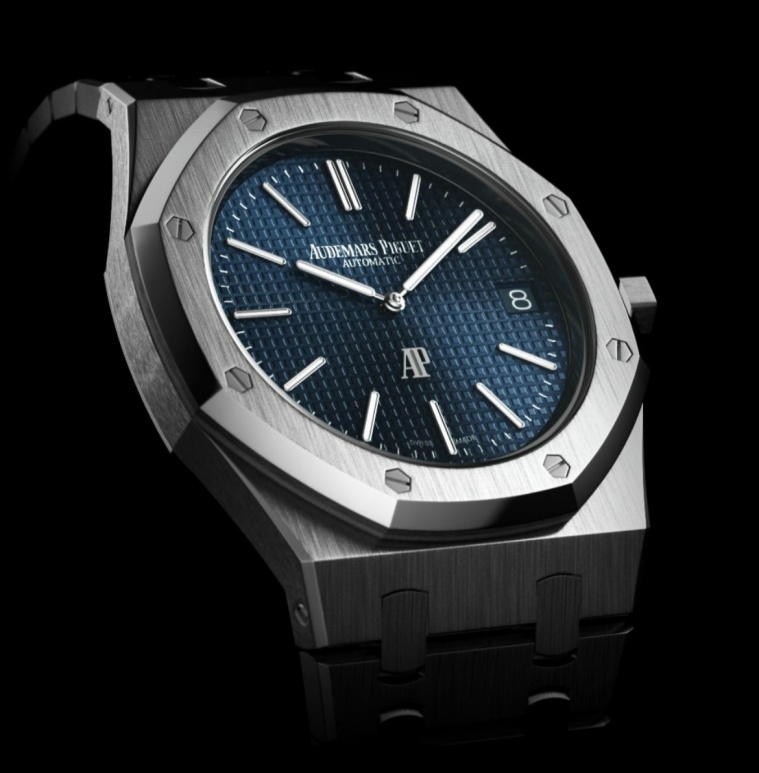More than an asset on the wrist: The fascinating economy of luxury watches
‘To own a stainless-steel Rolex Sky Dweller, I paid Rs 12 lakh in cheque, another 10 lakh in cash to retailer to jump queue’.
 Pocket watch (Savonette) made by Thos. Russell & Son (Wikimedia Commons)
Pocket watch (Savonette) made by Thos. Russell & Son (Wikimedia Commons) Jai B, a retired investment banker from South Mumbai, has been collecting watches ever since he was gifted his father’s old Cartier Tank on his 16th birthday. In 2021, the day his granddaughter was born, he got a call that his Rolex SkyDweller had finally arrived. That was after being on the waitlist for over three years.
“You don’t know how many watches I had to buy to get this,” he says with a wry smile. Ask most connoisseurs and they’ll tell you the same: to even be considered for one of these sought-after timepieces, you have to pay your dues. It’s a good investment though, according to Jai. “Before I had even taken it out of the box, the retailer told me there was another customer who was willing to give me double the amount I paid for it.”
Although prices for the most coveted of watches have fallen by 28 per cent since their peak in March 2022, luxury timepieces have still outperformed returns from stocks, cryptocurrencies and virtually every other asset class since 2018.
Whether you’re a watch aficionado or simply someone looking to make a quick profit, there is no better purchase today than a Rolex, Patek Philippe, Audemars Piguet or Richard Mille.
All that if you can actually get your hands on one.
History of watchmaking
Although historians disagree on the finer details, most credit German locksmith Peter Henlein with making the first portable timepiece in Nuremberg around the early 16th century. Unfortunately for the Germans, Henlein’s ground-breaking creation would soon be overshadowed by a religious revolution led by his compatriot, Martin Luther.
 One of the earliest examples of portable time piece, created by Peter Henlein. (Wikimedia Commons)
One of the earliest examples of portable time piece, created by Peter Henlein. (Wikimedia Commons)
A steadfast critic of the practices employed by the Catholic Church, Luther’s writings on the subject would go on to inspire the Protestant Reformation, a movement that ignited a series of violent wars across Germany and France. The chaos unleashed by the Reformation would dampen the progress of watchmaking in most of Western Europe, with perennially neutral Switzerland poised to reap the benefits.
Persecuted protestants from France, called Huguenots, and to a lesser extent, from Germany, fled across the Rhine to Switzerland, settling mostly in Geneva and bringing their horological expertise with them. The influx of French and German watchmakers transformed the Swiss watchmaking industry, making it into the industry standard it is today.
The Reformation gave the Swiss another unintentional advantage, thanks to John Calvin, a prominent Protestant reformer who led a revolution in Geneva when the Huguenots were entering the city. Calvin welcomed the Huguenots, but being an ardent believer in simple living, he introduced a series of strict austerity measures on outward displays of wealth such as a ban on wearing jewellery.
As goldsmiths, enamellers and other jewellers faced the prospect of seeing their business disappear almost overnight, in an act of desperation, they turned towards watches, which, due to their functionality, were exempt from the jewellery ban. In Switzerland, there was suddenly not only a deluge of master watchmakers but also of people building parts of the watch, including the strap and the face.
Despite these advantages, it were the Germans and the Dutch that led the race for horological advancement through most of the 17th century, The English, with their well-known pocket watch designs, led the pack during most of the 18th century. However, in the year 1800, there was a seminal development in the industry when a Frenchman, Frederick Japy, adopted mass production techniques of watchmaking. Japy’s system favoured watchmakers who were able to capitalise on Switzerland’s decentralised nature to produce timepieces at a much higher rate than their European counterparts.
Before Japy’s innovative system came into place, both Switzerland and England produced around 200,000 timepieces a year. By 1850, however, the Swiss were manufacturing close to 2.2 million watches annually, while the Brits saw virtually no increase in production. Around the same time, America was witnessing a rapid growth of railroads, an industry that demanded accurate timekeeping. Although American watchmakers were unable to replicate the artistry of the Swiss, they did become proficient in producing reliable watches quickly and cost-effectively.
The American system proved to be so appealing to the Swiss that in 1868, an American named Florentine Jones moved from Boston to Schaffhausen to launch the International Watch Company (known today as IWC), that would combine American efficiency with Swiss craftsmanship. After World WarI I decimated the American watchmaking industry, Swiss brands like Longines and Vacheron Constantin began courting the American market aggressively and successfully.
Their success would prove to be short-lived however, as by the 1970s, the Japanese had developed cheaper and more accurate quartz technology that was able to cater to the mass market. Exports of Swiss watches subsequently plummeted from 40 million in 1973 to only three million a decade later.
Once again, adversity bred innovation and by the 1980s, the Swiss, propelled by Swatch’s adoption of quartz technology, regained its supremacy in the upper echelons of watchmaking. Today, Swiss made watches are near synonymous with quality, a feat made possible by Japy’s optimisation of production more than 300 years ago.
As Andrew McCutchen, founder of the watch focused media outlet, Time and Tide, told indianexpress.com, what Swiss brands can do better than anyone else is maintain consistent quality across the watchmaking process. “They can control the process from end to end – from taking a block of steel to putting a watch on the customer’s wrist.”
Swiss watches have commanded an enviable premium for decades but even the most revered watchhouses could not have anticipated the watch mania we’re experiencing today.
The explosion of the watch market
As most watch collectors would tell you, the value of watches has increased significantly because of the enormous gulf between supply and demand. However, before getting into the calculated economics of scarcity, one should understand why demand has skyrocketed in the first place.
Although watches have historically always gained incremental value, the current surge in demand is unheard of. “From what it was 25 years ago, to what it is now, there is a world of a difference,” says Viral Rajan, the second-generation owner of Mumbai based watch retailer Time Avenue.
The trend first began after the economic downturn in 2007. As much of the West struggled to revive their economies, luxury spending shifted Eastward to cities such as Seoul, Shanghai, Mumbai and Hong Kong. As Asian economies flourished with high growth rates, so did their consumers’ appetite for luxury goods. According to Morgan Stanley, in 2021, the Asia Pacific region acquired the maximum revenue share in the luxury watch market, and given the rapidly increasing rate of Asian billionaires, no other market is poised to overtake it anytime soon.
Asia already has 951 billionaires compared to North America’s 777 and Europe’s 536. Moreover, according to Credit Suisse’s 2022 Global Wealth Report, the value of assets held by the top one per cent rose 11 times in India and 34 times in China between 2000 and 2021, compared to just 3.6 times in the United States. And as developing economies, Asian countries like China, South Korea and India are likely to maintain this comparatively higher rate of growth vis-à-vis their Western counterparts for the foreseeable future.
For these newly minted millionaires and billionaires, there are few better status symbols than a luxury watch. As a familiar saying amongst China’s online fashion community goes, “poor people compete over cars, while rich people compete over watches”.
Major players in the watchmaking industry like Cartier and Hublot have long attempted to capitalise on this emerging Asian market, but few would have anticipated the wealth of opportunities that would soon come their way through the most unlikely of sources, namely, Covid-19.
During the pandemic, interest in luxury watches surged as housebound consumers, basking in disposable income freed up by the lack of travel and dining out, increasingly turned towards luxury goods. According to McCutchen, equipped with this cash and plenty of time on their hands, consumers began to discover the value and joy of owning a watch. “They would find their dad’s old Rolex in a sock drawer,” he said, “and upon doing a quick Google search, would discover that it’s worth upwards of USD 15,000.”
The pandemic would also boost digital sales, as the five large auction houses discovered in 2020. Initially, the likes of Sotheby’s, Christies and Phillips feared that without the ability to physically examine their goods, consumers would shy away from making large purchases. To their surprise, the opposite would prove to be true. During Phillips’ first digital live auction, their sales totalled over USD 31.7 million.
Luxury watchmakers, whose goods were suddenly subject to a massive surge in demand, took notice, and soon began to double down on their aspirational status.
Supply and demand
As the American economist Thorstein Veblen noted in 1899, when the price of an object increases, so does its reputation as a status symbol and consequently its price. One of the most successful brands to recognise and capitalise on this phenomenon, according to McCutchen, is the French watchhouse, Richard Mille.
“Richard Mille was never about value for money,” he explains, “it was about association with expansive goods.” In fact, one of the first advertising campaigns la]unched by the brand after its inception in 2001, focused heavily on its association with luxury, proudly displaying the price of its watches, which at the time ranged at around USD 100,000. According to Nico Leonard, a popular watch blogger on YouTube, brands like Hublot and Richard Mille represent a masterclass in marketing, focusing their campaigns less on their products and more on the status they confer upon their owners.
 Richard Mille 40-01 (Richard Mille website)
Richard Mille 40-01 (Richard Mille website)Other brands were quick to take notice, as Richemont (owners of the likes of Cartier, Jaeger-LeCoultre and Piaget), demonstrated in 2016. In May of that year, the Richemont Group Chairman Johann Rupert castigated the rampant overproduction in the Swiss watchmaking industry, taking the unusual step of spending EUR 249 million to buy back excess watches.
In short, Rupert understood that scarcity drives prices, which in turn fuels demand, so in order to maximise desirability, watchmakers had to control supply. Another example of using supply to drive demand is Patek Philippe’s decision in 2021 to stop producing its highly sought-after Nautilus 5711, a watch that some prospective buyers were already waiting for eight to 10 years to acquire.
Rolex, for its part, produces around one million watches per year according to estimates from Morgan Stanley. “Historically, part of the charm of Rolex was that one could walk into any authorized dealer around the world with a few thousand dollars and walk out with a certifiable icon of modern watchmaking,” said Benjamin Clymer, the founder of e-commerce watch retailer Hodinkee. As recently as 2018, the Rolex Daytona was the only model that was hardly ever seen in shops, but soon after Submariners began to disappear, and then GMT-Masters and Sea-Dwellers, then Explorers, Air-Kings, Sky-Dwellers and even steel Datejusts, according to Clymer.
 Rolex Daytona stainless steel (Rolex Website)
Rolex Daytona stainless steel (Rolex Website)The scarcity of Rolex became so evident that in 2021, Rolex even made a rare public statement declaring that the scarcity was not a strategy but rather a consequence of existing production limits, an issue that the brand was attempting to solve by building three new factories.
For McCutchen however, that fails to address the fundamental problem. Even if Rolex ramps up demand by 10 per cent, or 100,000 watches, there are millions of people who want to buy them. In the current scenario, according to McCutchen, Rolex can never produce enough supply to meet even a fraction of demand.
And while restricting supply may be a sales tactic for some (Audemars Piguet produces 60,000 watches per year and Patek Phillipe 53,000), for most, increasing production is simply not an option because watchmaking, and Swiss watchmaking in particular, is not a rapidly scalable industry.
“There is a true shortage of manpower,” Aurélie Streit, vice president of the Fondation de la Haute Horlogerie, said during a recent video interview from the organization’s Geneva headquarters. “Not only watchmakers, but also specialists in the 15 other watchmaking jobs, from precision mechanics to engineers, finishers, polishers, research and development, and more.”
In the short term, this scarcity may seem beneficial for brand value, but as Leonard argues, in the long term people will slowly turn away from these products because even if they can afford it, they can’t access it. “I’m worried about Patek, Vacheron and Rolex – not financially – but where they stand as a brand,” he says. Unless they find a way to adapt, according to Leonard, they risk looming irrelevance, a fate that Breguet, one of the oldest watchmakers, now unfortunately faces.
Although Leonard predicts a dire future, at the moment, luxury Swiss watchmakers still dominate the market, largely in part due to the rise of the so-called ‘hype watch.’
The hype watches
Since the 1970s, the phrase known as the Holy Trinity of Watches has been used to refer to Vacheron Constantin, Audemars Piguet and Patek Philippe. Today, according to Rajan, the Holy Trinity still exists, except that Vacheron has been replaced by Rolex. Arguably, he says, Jaeger-LeCoutre should be included in the list.
But as the brand was known as a seller of watch components (with over 400 patents to its name,) it failed to be recognised as a leading house in its own right, instead obtaining the admittedly impressive moniker of being the “watchmaker of watchmakers.”
 Audemars Piguet Royal Oak (Audemarks Piguet website)
Audemars Piguet Royal Oak (Audemarks Piguet website)
Watercooler arguments aside, the most coveted watches today have been described as hype watches because of their immense resale value. According to McCutchen, because Rolex and similar brands are now associated with making money, they’ve acquired a whole different consumer base. “Instead of catering to watch enthusiasts, you have scalpers and speculators who just want to make money off the product,” he says.
So, what is a hype watch? It’s not just a wildly expensive timepiece – there are several of those available today – but fundamentally, one that is inaccessible. No watch better encapsulates the term than the limited-edition Tiffany-blue Nautilus 5711, created by Tiffany and Patek Phillipe, and restricted to only 170 pieces. So rare is this model that even Ed Sheeran had to wait for five years to get one, and at a charity auction in 2021, the limited-edition watch sold for upwards of USD 6.5 million.
The astounding value of these watches have in turn created a thriving second-hand market in which models such as Rolex Daytona can sell for more than 150 per cent over its market retail price. According to a report from Deloitte, these second-hand markets will continue to grow as the new Holy Trinity of watches becomes increasingly harder to get. However, for the brands producing them, that may not always be a good thing.
One watch collector and industrialist from the Mumbai suburb of Bandra, Ajit M (56) explains why that’s the case. Ajit, who owns an impressive array of watches, says that in 2022, at the height of the watch boom, he wanted to buy a stainless-steel Rolex Sky Dweller from one of the city’s few authorised retailers. “The MRP of the watch was around Rs12 lakh, which I paid by cheque,” he says. “On top of that, I gave the retailer Rs 10 lakh in cash to bypass the waitlist.”
Another watch enthusiast, Kiran H who works at one of the largest second hand watch retailers, when asked about this practice, readily acknowledged its frequency. For Rolex, he says, this presents a significant problem. As Kiran notes, “If Ajit had sold the watch, even a day later, he would have likely got Rs 25-30 lakh on the second-hand market. So Ajit and the retailer stand to make a significant profit, but Rolex only pockets the Rs12 lakh that was officially paid for the watch.”
According to McCutchen, the problem has become so entrenched that the days of walking into a store and buying a Rolex or a Patek are long gone and likely never to come back. As watches become assets that can be flipped and sold for massive profits, their retail prices become “fictional” because you’re always going to have to pay a premium, in some way or another, to acquire them.
However, it’s not all doom and gloom for aspiring watch collectors. As both Leonard and Rajan point out, because of the explosion of interest there has also been an explosion of opportunity. And while many watches will remain a pipe dream for most consumers, they can aim instead to start small and focus on independent watchmakers who offer an abundance of quality for a fraction of the price.



- 01
- 02
- 03
- 04
- 05




























